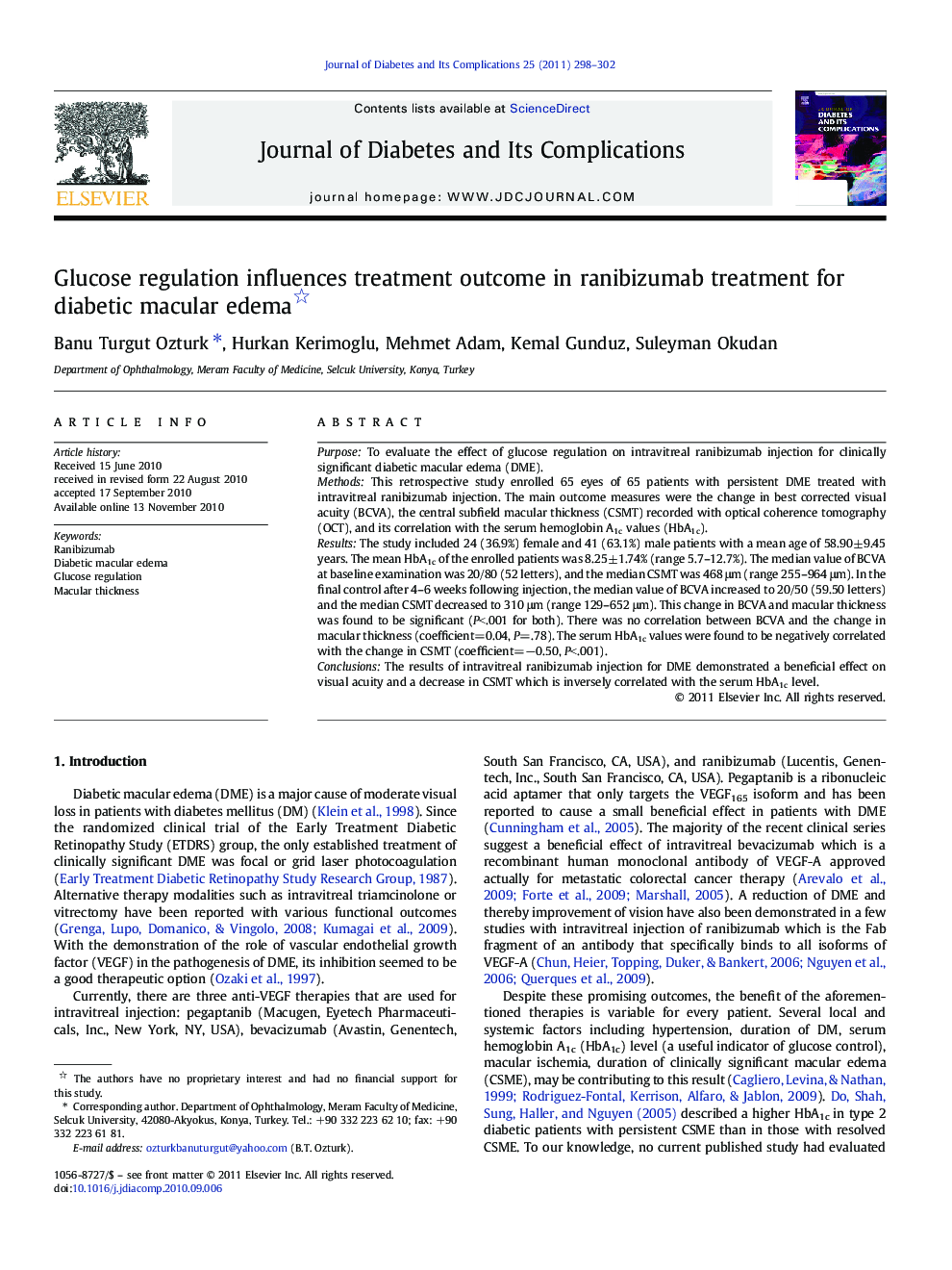| Article ID | Journal | Published Year | Pages | File Type |
|---|---|---|---|---|
| 2804435 | Journal of Diabetes and its Complications | 2011 | 5 Pages |
PurposeTo evaluate the effect of glucose regulation on intravitreal ranibizumab injection for clinically significant diabetic macular edema (DME).MethodsThis retrospective study enrolled 65 eyes of 65 patients with persistent DME treated with intravitreal ranibizumab injection. The main outcome measures were the change in best corrected visual acuity (BCVA), the central subfield macular thickness (CSMT) recorded with optical coherence tomography (OCT), and its correlation with the serum hemoglobin A1c values (HbA1c).ResultsThe study included 24 (36.9%) female and 41 (63.1%) male patients with a mean age of 58.90±9.45 years. The mean HbA1c of the enrolled patients was 8.25±1.74% (range 5.7–12.7%). The median value of BCVA at baseline examination was 20/80 (52 letters), and the median CSMT was 468 μm (range 255–964 μm). In the final control after 4–6 weeks following injection, the median value of BCVA increased to 20/50 (59.50 letters) and the median CSMT decreased to 310 μm (range 129–652 μm). This change in BCVA and macular thickness was found to be significant (P<.001 for both). There was no correlation between BCVA and the change in macular thickness (coefficient=0.04, P=.78). The serum HbA1c values were found to be negatively correlated with the change in CSMT (coefficient=−0.50, P<.001).ConclusionsThe results of intravitreal ranibizumab injection for DME demonstrated a beneficial effect on visual acuity and a decrease in CSMT which is inversely correlated with the serum HbA1c level.
